and Study Up Close
Through August 27
Orlando Museum of Art
Details here
Organized by the Orlando Museum of Art highlighting artists living and practicing in all corners of Florida, these 10 people (actually 11 – Elliot & Erick Jiménez are twins collaborating as one entry) are the artists selected for this ninth annual Florida Prize in Contemporary Art.
What draws major attention is the $20,000.00 prize, this year won by Akiko Kotani, the first Creative Pinellas Artist Laureate. This makes me happy as I have installed her work in the USF Contemporary Art Museum, a museum where I previously worked, and visited her in Iceland during her artist residency in 2021.
Quite an unassuming person with an inner vision like a subterranean river eroding layers of geology.

Kotani’s sculptures evolve from her interests in textile art, taking her to Guatemala learning from their weaving tradition in the early 1970s. She has since focused on a crochet method – and in the process, has made hundreds, thousands, hundreds of thousands, maybe millions in her career, of hand sewn stitches… a stitch in time… she can speak her own idioms at this point.
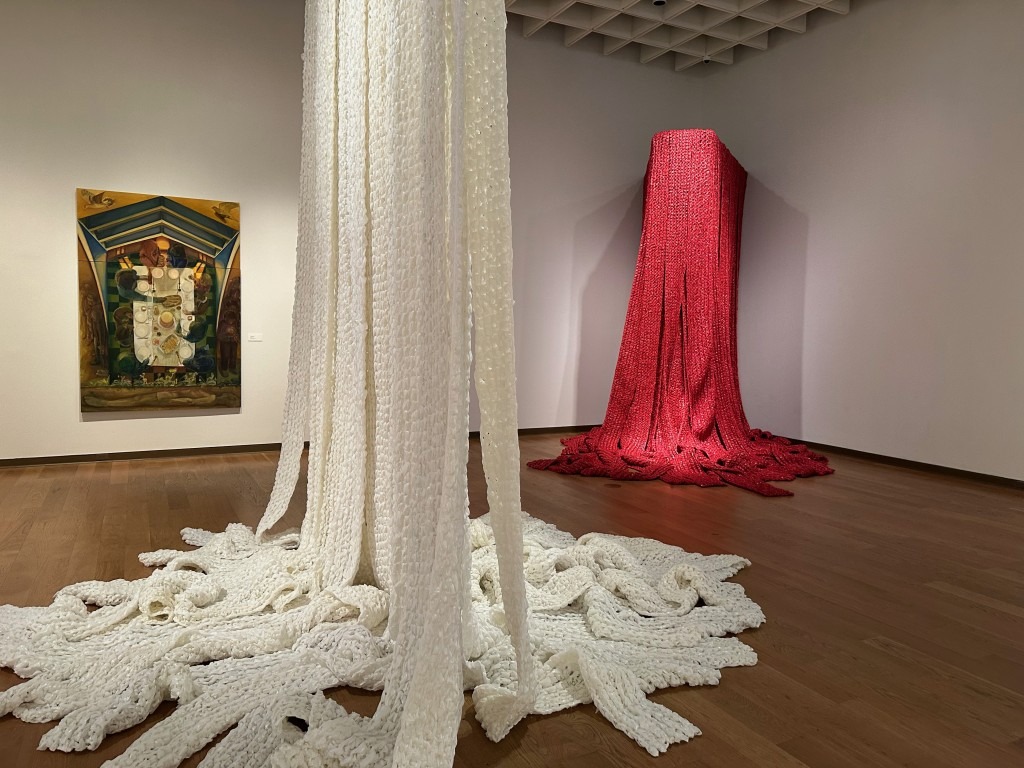
Exhibiting White Falls and Red Falls, she also created a trio of 15 foot high conical forms dangling from the ceiling, titled Neon Forest for this exhibition and made for this specific space. Whirling dervishes of the Sufi mystics, who are sometimes otherworldly comes to mind.
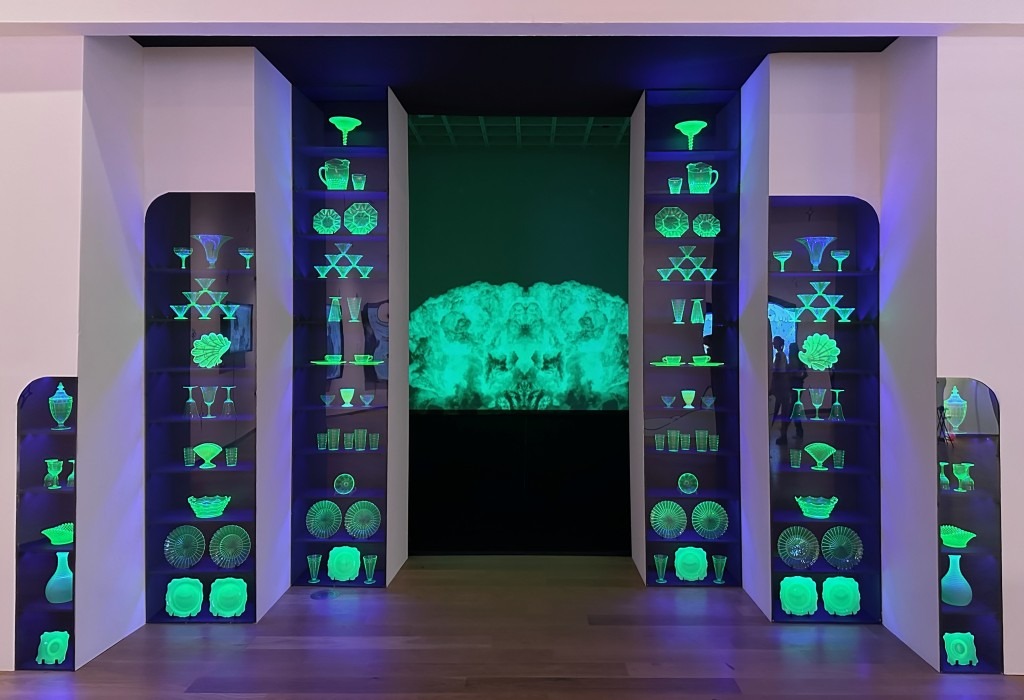
A collection of Depression-era glassware glowing green under ultraviolet light due to ingredients of uranium oxide, seductively framing the entrance to Cara Despain’s Test of Faith. It is a three-channel projection of atomic bomb explosions, sourced from nuclear test footages at the Nevada Test Site, edited to look like morphing Rorschach inkblot patterns accompanied by a Mormon hymn “Love One Another” soundtrack. At once hypnotic and disconcerting.
Despain grew up less than 150 miles from the Nevada Test Site, and is part of the great American West and all that implies… as inheritor of the Manifest Destiny doctrine, for the artist personally and for the nation as a whole, shouldering all resulting benefits and consequences, intended or otherwise.
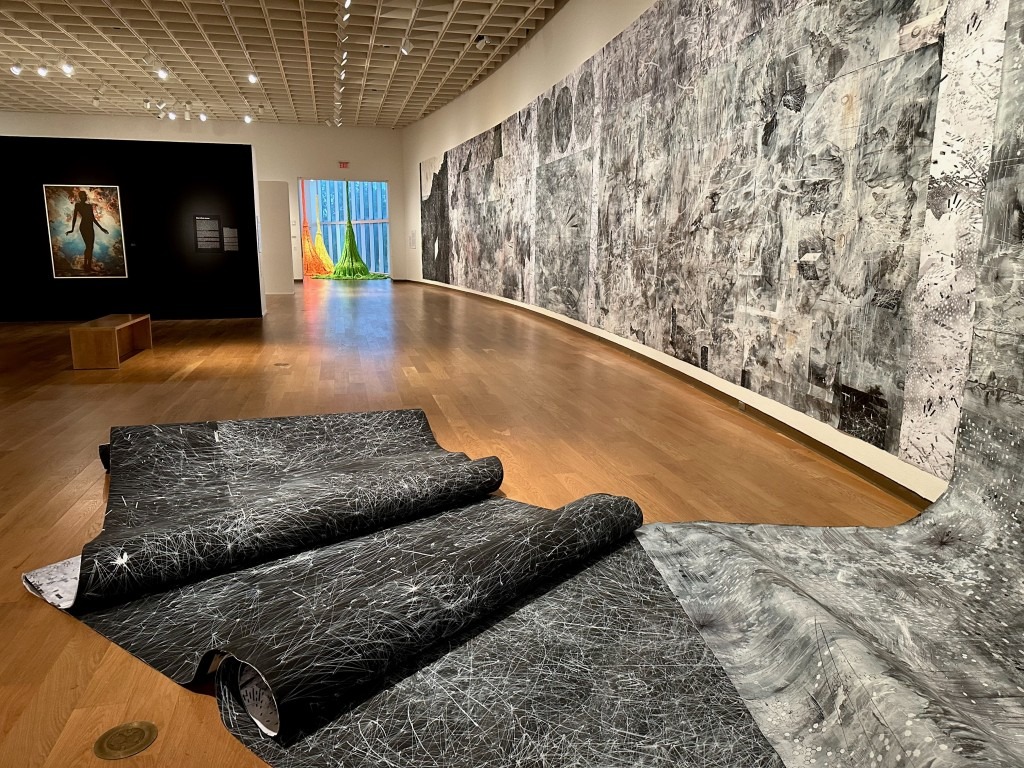
A massive drawing unrolls across the whole of the longest wall in the largest gallery – curling onto the floor like a giant scroll, that from across the room is like the expanse of sky with galaxies of stars, planets and uncountable other colliding space stuff.
The title Silent Cities brings it down to Earth. Conceived by Amy Schissel, it is a heroic cartographic endeavor, mapping social consciousness and movement across the physical and virtual worlds, impossibly melding together multidimensional existences into one spacescape.
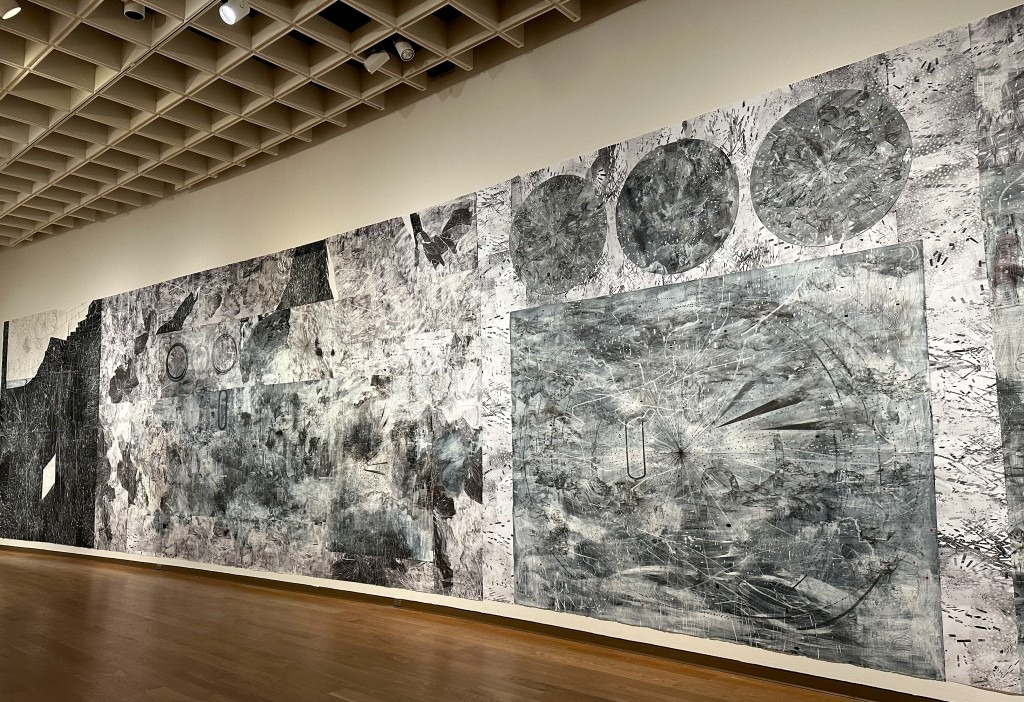
Wonderful to look at from afar and study up close. The whole conceptual process that moved her hand yielding drawing instruments making simple dots and lines… as Wassily Kandinski writes in his book Point and Line To Plane on the relationships and complexities built from the most basic of marks.

And of actual physical places, what would a Florida show be without someone addressing its natural environment? That’s exactly what Magnus Sodamin does with works carrying such indigenous titles as Two Herons, Blue Heron, A Land Remembered, Roseate Spoonbill, Natural House, Wildlife Corridor.

Prominently at the exhibition entrance greeting visitors, Sodamin’s heavily textured gestural pieces convey the wildness of Florida’s many ecosystems and its untamed essence, dying, but surviving in spite of the unencumbered incursions of industries and urban sprawl.
I think if his works were placed in the grasses and woodland spaces of the Everglades, they would camouflage in nicely like the many creatures that naturally belong there.

Six of the artists work in figurative style – two painters, three in photography and one minting NFTs. Collectively, this could be a micro sampling of the macrocosm of us as a human whole – at the same time how singular each individual, the unique journey of each, even if you’re identical twins like the Jiménezes.
After so much press about NFTs a couple of years back, this exhibition is my first seeing their presentation. From his exhibition label, Tampa’s “Yosnier Miranda is the first Generation Z (born after 1996) artist to be included in the Florida Prize exhibition. This generation is characterized by being digital natives, having grown up with the internet and social media as part of daily life.”
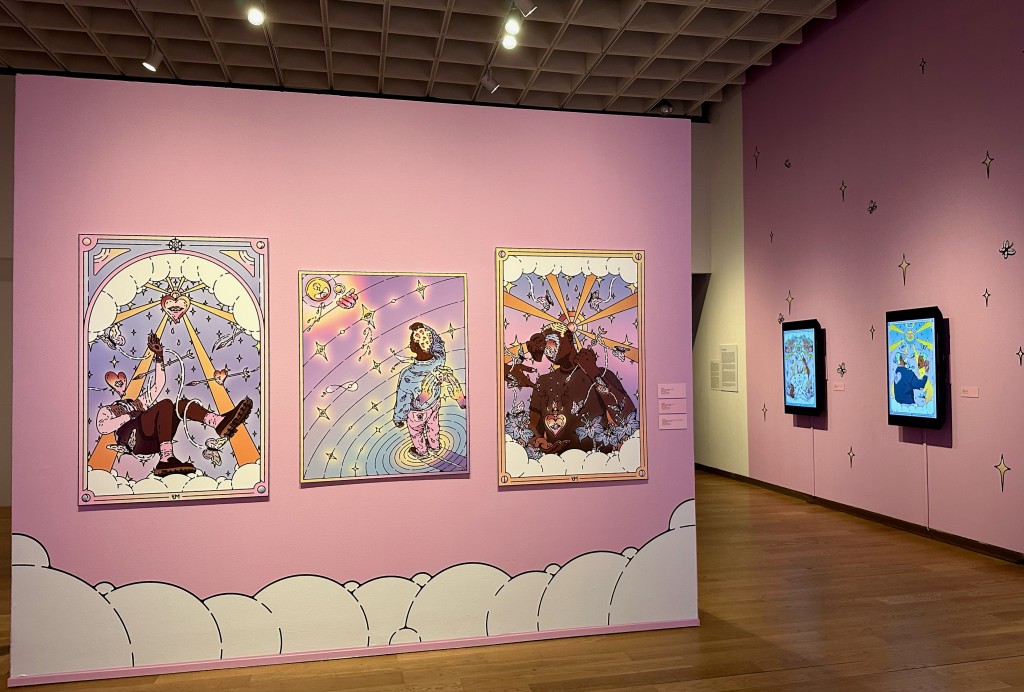
The gallery for Miranda’s digital images is painted a light mauve with stylized stars, butterflies and clouds. Seven monitors, each displaying one NFT, plus another three print versions of NFTs on a free-standing wall – an interesting throwback to traditions of print editions, the virtual and physical worlds overlapping as theorized in Amy Schissel’s mapping.
Resplendent with flowers, hearts, radiating rays and other symbols they convey an overarching theological thinking. One piece, I don’t know how much more of this I can handle with a figure shot full of arrows perhaps referencing “St. Sebastian”? In another titled Self Portrait, Sun rays becomes a halo surrounding the artist’s head.
All the figures occupy some undefined psychic space indicating a journey, a struggle, a transcendence… Once I heard in a lecture – as many people as there are on this planet, there are that many religions. These NFTs are Miranda’s religion and life path expressions.

The other five artists use more traditional materials and formats exploring identity and meaning in the family, in the mundane, in religion, in racial and social scales and classes.
The intriguing birds eye view perspective in MJ Torrecampo’s paintings of tightly cropped spaces enter the realm of religion, like Miranda’s spiritual quests but with very different intent.
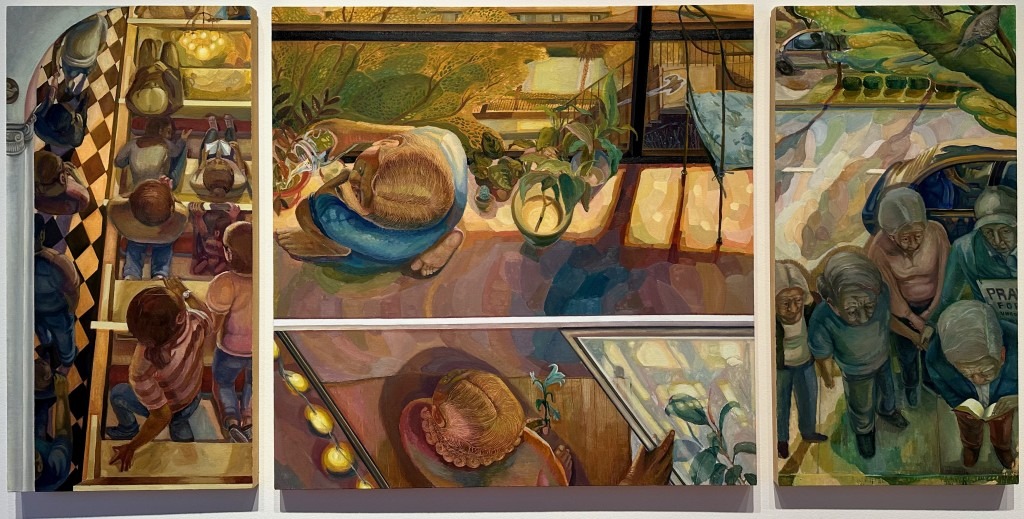
Titles of works like Painter as Saint Luke show an artist (Torrecampo herself?) at an easel, and hint at the content. Luke, famous for his gospel with detailed narration of its Annunciation, Visitation and Adoration events, which also happen to be titles of three other paintings.
Torrecampo maps these Biblical stories onto contemporary scenes and household activities. There’s a person using a smart phone in the Adoration painting. Are these corresponding events illustrating contemporary faithfuls? Are these tightly cropped, claustrophobic spaces questioning the ability to freely move or grow?

The other painter, Reginal O’Neal provides maybe the strongest voice of the whole exhibition with his five paintings. They present an unflinching glimpse of repression and racism.
“My goal as an artist is to continue doing what I’m doing now – expressing my truth.”
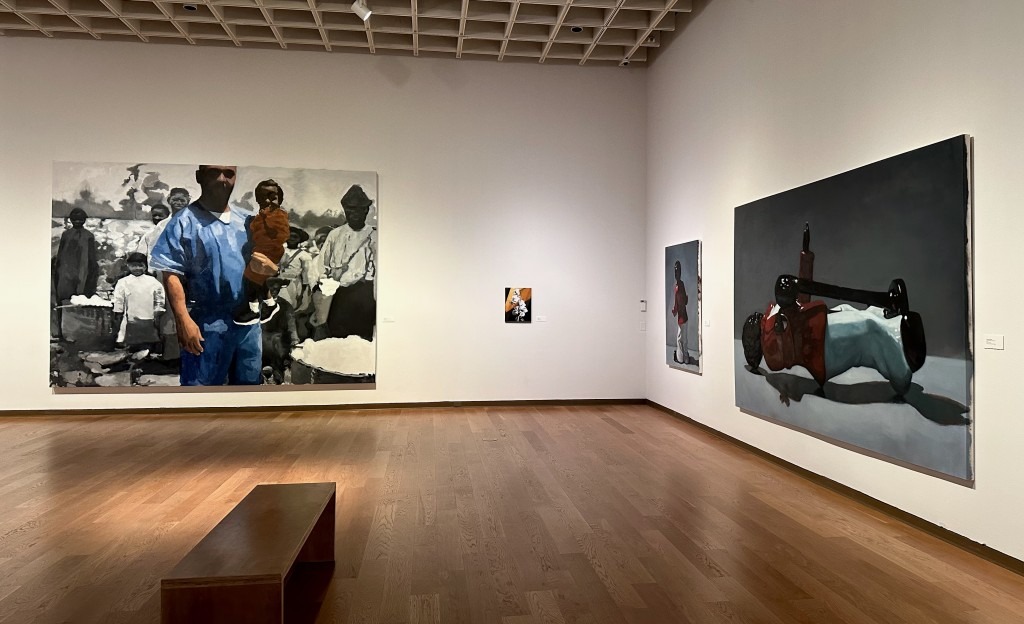
The largest painting (he began his career as a muralist, as seen in last year’s SHINE Mural Festival) is paired with the smallest painted canvas, Cotton – of a branch of cotton ready to be picked.
The monumental My Father, Lil Pat, and Our Ancestors depicts his father in blue prison jumpsuit holding his nephew backed by ancestors working a cotton field. That’s a very long minute between the background and the foreground, but has the status of these communities they represent changed?
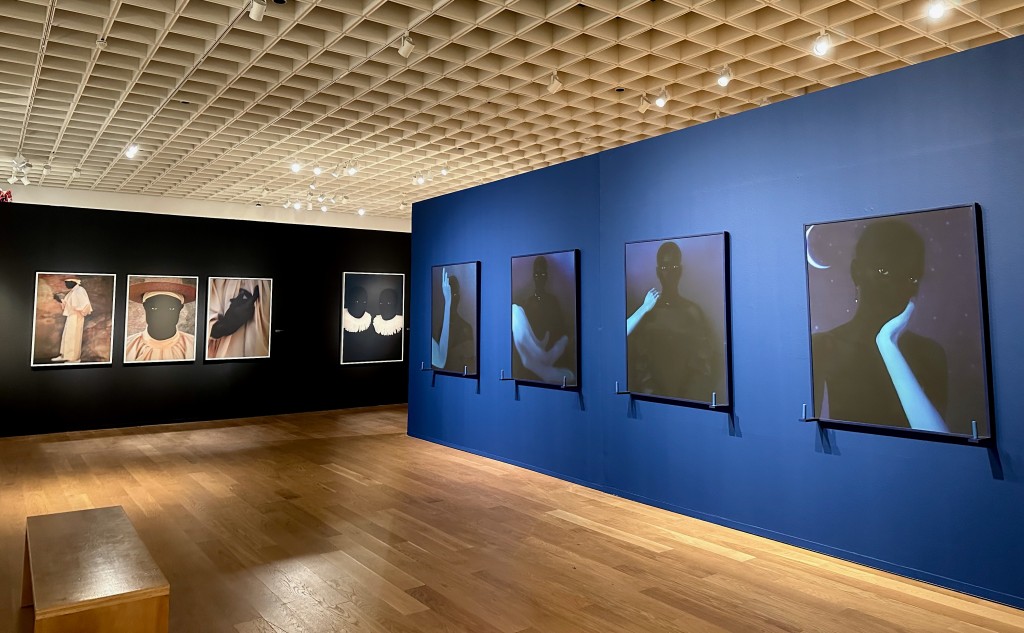
The Jiménez twins are of Cuban descent, and their photographic works mine this heritage. One aspect is the religion Lucumí, more commonly known as Santería. Due to Spanish colonial rule whose sanctioned religion was Catholicism, the enslaved Yoruba population of Cuba adopted external forms of Catholic rituals and saints to avoid additional persecution – while internally infusing them with qualities of Yoruba deities, called orishas.
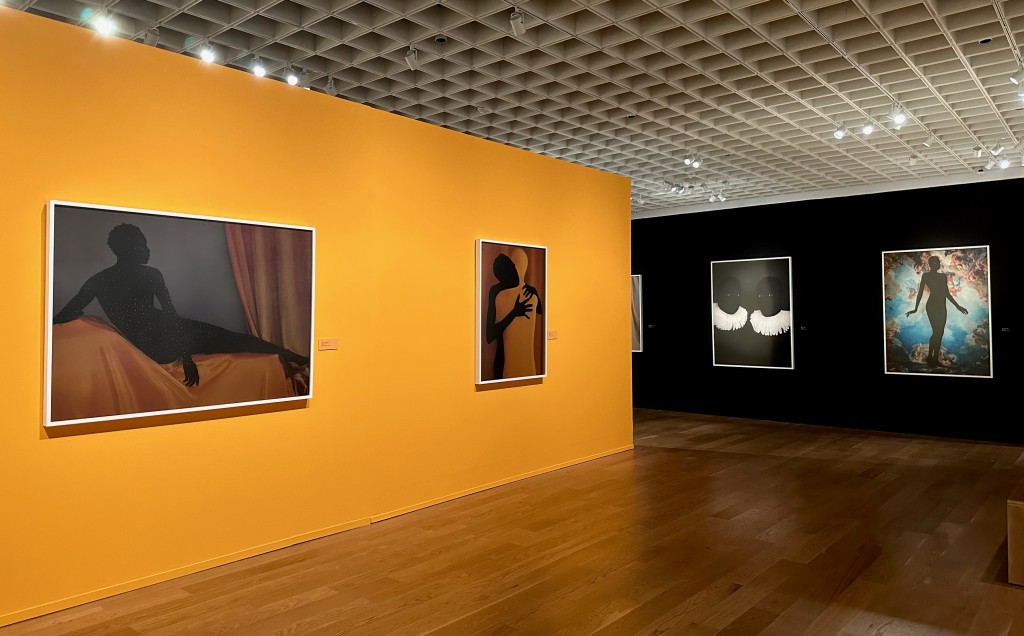
The Jiménezes’s sumptuous works explore the complex fusion of these religions. One striking four panel series is Blue Chapel – the portrait of Yemaya in custom candleholder frames. Yemaya, mother of the orishas representing “… rejection, acceptance, advocacy and interdependence. Blue Chapel exquisitely conveys the mystery, allure and power these intertwined religions have for their followers.”
Pivot from that to the photography of Peggy Levison Nolan in the adjoining gallery – oh so different, like moving to another country.
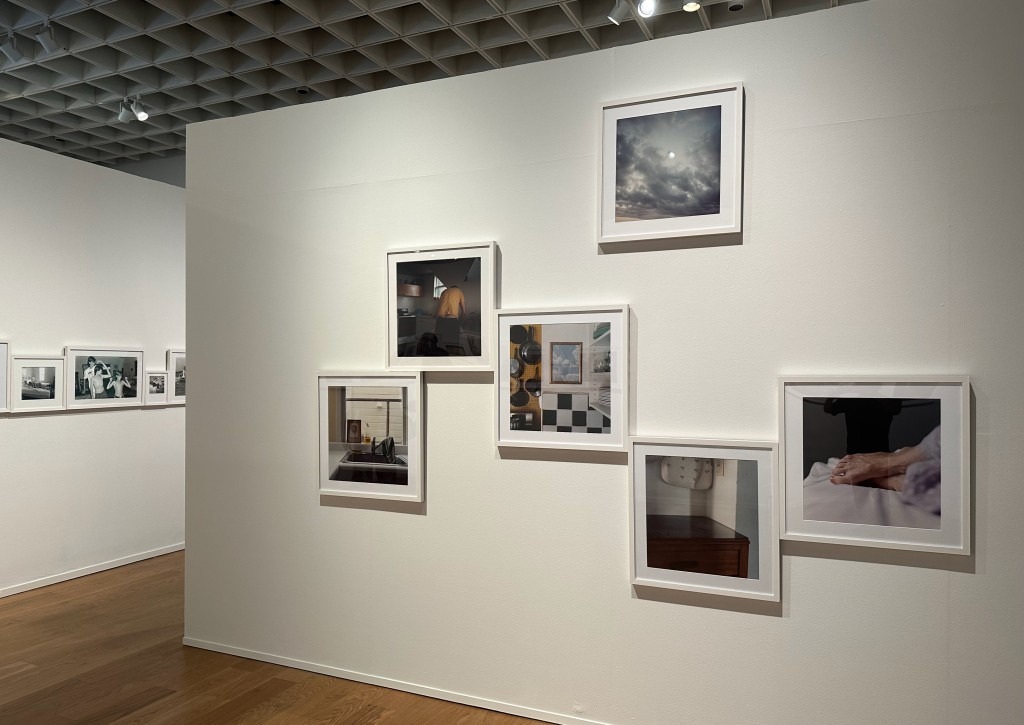
Nolan documents the quotidian happenings of family life – giving the baby a bath, making the bed, kids roughhousing, a comforting hug, some tears, some laughter, many in-between moments – one day after another, one year after another…
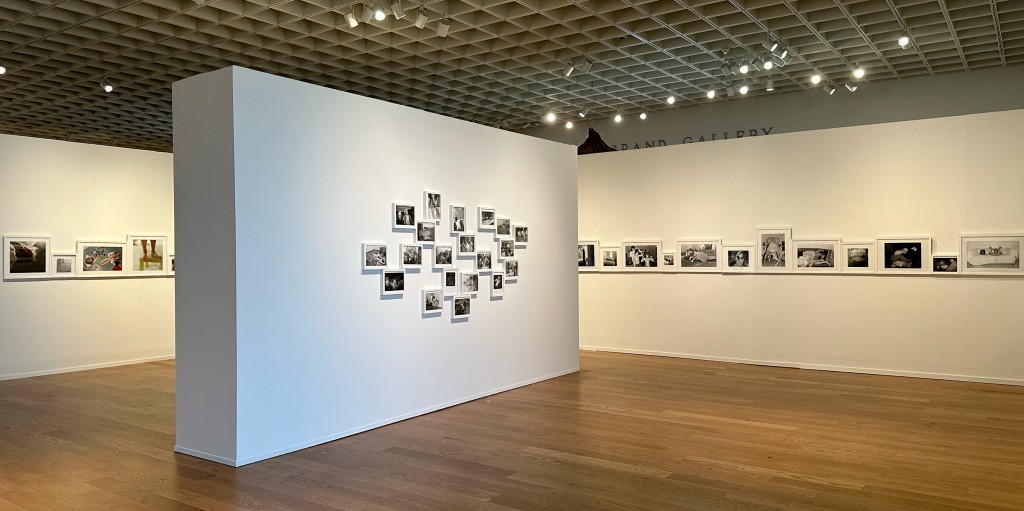
Her father once asked for some pictures of his grandkids – one click of the shutter, one picture, then another – and like Kotani’s one stitch after another, like the river flowing one season after another and voila, many pictures later, beyond dad’s photo album, they’re now published in books, in collections, in galleries, in museums.
In a much younger life I assisted in an archeological dig in central California working through what was once the trash heap of early Spanish conquistador missions – Mission San Antonio. Every shovel of dirt contained so much history. What was once thrown away now tells us their origins.
Are we any different today if not more so in the overabundance of trash? Joy for future archeologists.
But right now, artists like Denise Treizman dig through it.
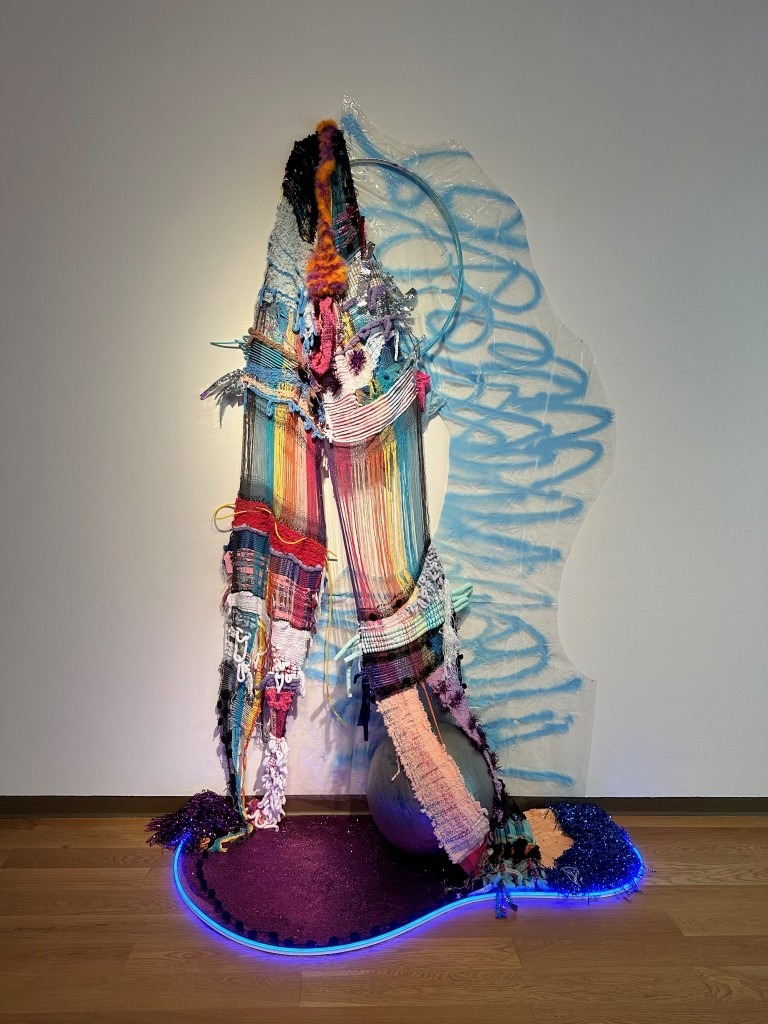
Her didactic label – “The raw materials of Denise Treizman’s work come from the waste stream of contemporary society…” She accumulates a wide variety of discarded materials, detritus – which she then upcycles into sculptures for the wall, sitting on floors, or into room-size installations, weaving a long and windy tale of alchemy, of aesthetic transformation. The ugly duckling is really a swan!
Weaving, in this case, is both figurative and literal. Treizman, like Akiko Kotani, learnt weaving at one point along her artistic journey, introduced to it by a fellow artist during a residency at ACRE in Steuben, Wisconsin.

She started experimenting, incorporating salvaged materials, all with their own backstory contributing to the larger whole – resulting a cacophony of materials, colors, textures, shapes and dimensions.
There must be engineering as well keeping it all together. It is very playful with an unpredictability.
And that’s the ten (11) artists in this year’s Florida Prize in Contemporary Art exhibition.
Cara Despain – Miami
Elliot & Erick Jiménez – Miami
Akiko Kotani – Gulfport
Yosnier Miranda – Tampa
Peggy Levison Nolan – Hollywood FL
Reginald O’Neal – Miami
Amy Schissel – Miami
Magnus Sodamin – Miami
MJ Torrecampo – Orlando
Denise Treizman – Miami





